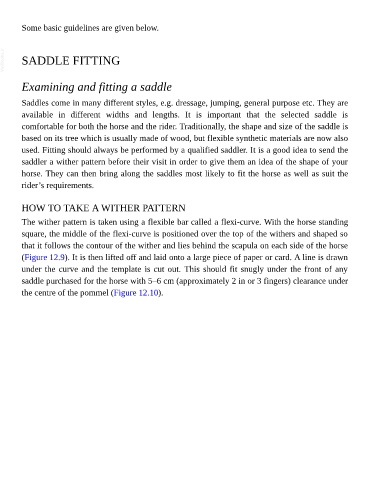Page 548 - The Veterinary Care of the Horse
P. 548
Some basic guidelines are given below.
VetBooks.ir SADDLE FITTING
Examining and fitting a saddle
Saddles come in many different styles, e.g. dressage, jumping, general purpose etc. They are
available in different widths and lengths. It is important that the selected saddle is
comfortable for both the horse and the rider. Traditionally, the shape and size of the saddle is
based on its tree which is usually made of wood, but flexible synthetic materials are now also
used. Fitting should always be performed by a qualified saddler. It is a good idea to send the
saddler a wither pattern before their visit in order to give them an idea of the shape of your
horse. They can then bring along the saddles most likely to fit the horse as well as suit the
rider’s requirements.
HOW TO TAKE A WITHER PATTERN
The wither pattern is taken using a flexible bar called a flexi-curve. With the horse standing
square, the middle of the flexi-curve is positioned over the top of the withers and shaped so
that it follows the contour of the wither and lies behind the scapula on each side of the horse
(Figure 12.9). It is then lifted off and laid onto a large piece of paper or card. A line is drawn
under the curve and the template is cut out. This should fit snugly under the front of any
saddle purchased for the horse with 5–6 cm (approximately 2 in or 3 fingers) clearance under
the centre of the pommel (Figure 12.10).

